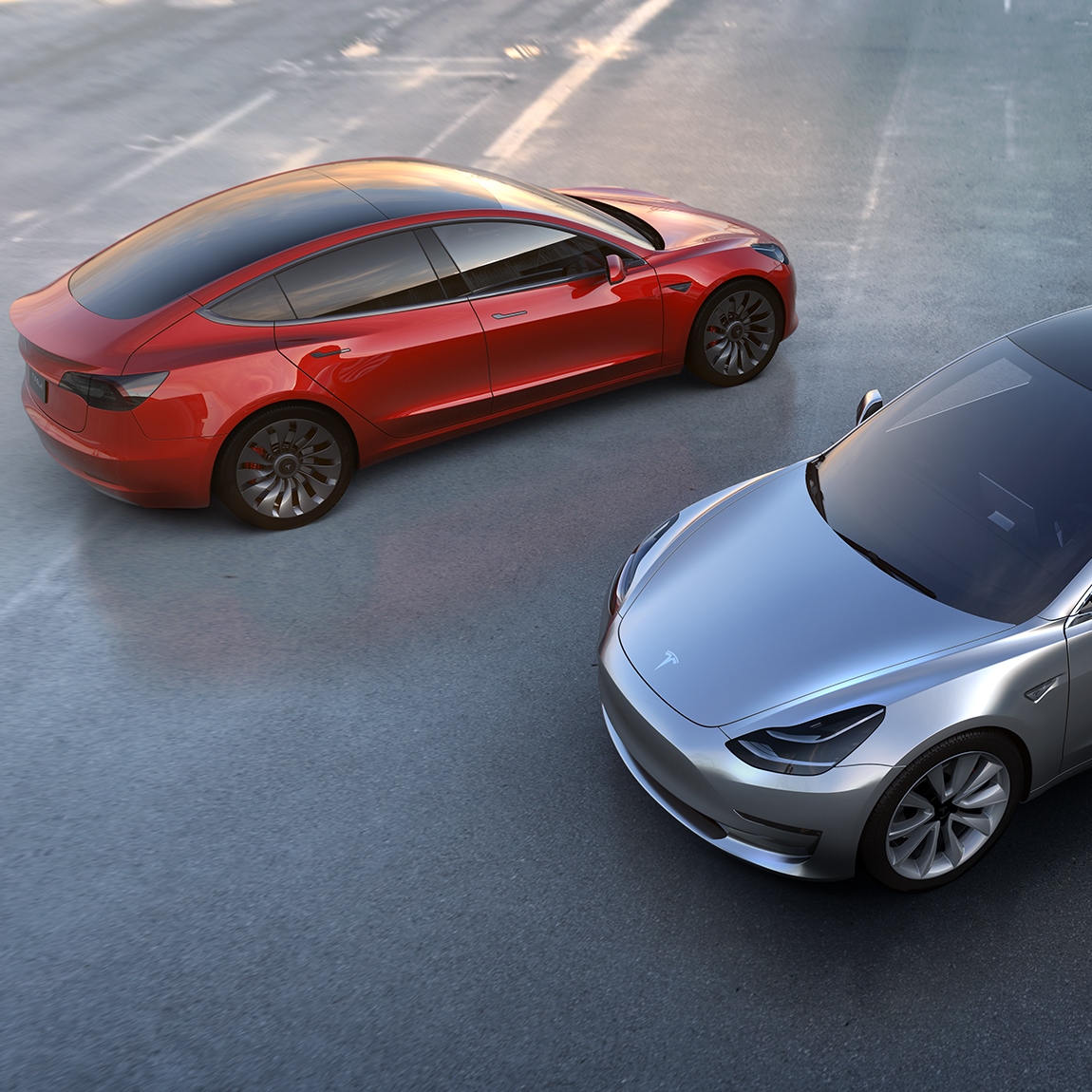Cars and Drivers
Tesla Posts Loss, Pushes Out Model 3 Production Ramp

Published:
Last Updated:

Tesla Inc. (NASDAQ: TSLA) reported third-quarter 2017 earnings after markets closed on Wednesday. For the quarter, the electric car maker posted an adjusted diluted loss per share loss of $2.92 on revenues of $2.98 billion. In the same period a year ago, the company reported adjusted earnings per share (EPS) of $71 on revenues of $2.3 billion. Third-quarter results compare to consensus estimates calling for a per share loss of $2.30 and $2.94 billion in revenues.
The rise in automotive revenues, from $2.16 billion in the third quarter of last year, to $2.36 billion this year was attributed to a 4.5% increase in Model S and Model X volumes. Sequentially revenues rose about 3% and the percentage of vehicles subject to lease accounting were roughly flat sequentially at 21% of deliveries. The company said it will not offer leases on the new Model 3.
What will set the share price back is an announced delay in the Model 3 ramp to 5,000 units a week from the end of the fourth quarter of this year to the end of the first quarter of next year. Problems with battery production at the company’s Gigafactory 1 in Nevada are named as the primary constraint on Model 3 production.
The carmaker had already announced that it delivered slightly 26,137 vehicles in the quarter, including just 222 of the Model 3. Tesla did not say how many cars it produced in the quarter. At the end of last quarter the company said there were 3,500 vehicles in transit to customers that would not be counted until the third quarter. Neither did the company say how many vehicles were in transit at the end of the third quarter that would be counted in revenue for the fourth quarter.it produced 25,708 vehicles in the second quarter.
In its outlook statement, Tesla said it expects Model S and Model X deliveries to be on a pace to reach around 100,000 in 2017, up 30% compared with last year. Shifting production workers to Model 3 will result in production of 10% fewer of the earlier models and decline in finished inventory. Tesla said that Model 3 gross margin should reach breakeven by the end of the fourth quarter and “improve rapidly” in 2018 to the targeted 25% level.
The increasing number of lower-margin Model 3 sedans in the vehicle mix will reduce adjusted gross margin to about 15% in the fourth quarter and begin to recover in the first quarter of next year. And Model 3 is the key to it all:
Between cash on hand, future cash flows and available lines of credit, we believe that we are well capitalized to accommodate the revised ramp of Model 3 production to 5,000 per week. Upon achieving this production level, we expect to generate significant cash flows from operating activities.
Capital spending is targeted at $1 billion in the fourth quarter to accommodate Model 3 production, Gigafactory work, and additional expansion of stores, service centers, and Supercharger stations.
Tesla’s shares traded down about 4% at $308.00 in Wednesday’s after-hours session after closing at $321.08. The stock’s 52-week range is $178.19 to $389.61. The 12-month price target for the shares was $323.48 before the report with the highest target set at a whopping $500.00.
The average American spends $17,274 on debit cards a year, and it’s a HUGE mistake. First, debit cards don’t have the same fraud protections as credit cards. Once your money is gone, it’s gone. But more importantly you can actually get something back from this spending every time you swipe.
Issuers are handing out wild bonuses right now. With some you can earn up to 5% back on every purchase. That’s like getting a 5% discount on everything you buy!
Our top pick is kind of hard to imagine. Not only does it pay up to 5% back, it also includes a $200 cash back reward in the first six months, a 0% intro APR, and…. $0 annual fee. It’s quite literally free money for any one that uses a card regularly. Click here to learn more!
Flywheel Publishing has partnered with CardRatings to provide coverage of credit card products. Flywheel Publishing and CardRatings may receive a commission from card issuers.
Thank you for reading! Have some feedback for us?
Contact the 24/7 Wall St. editorial team.